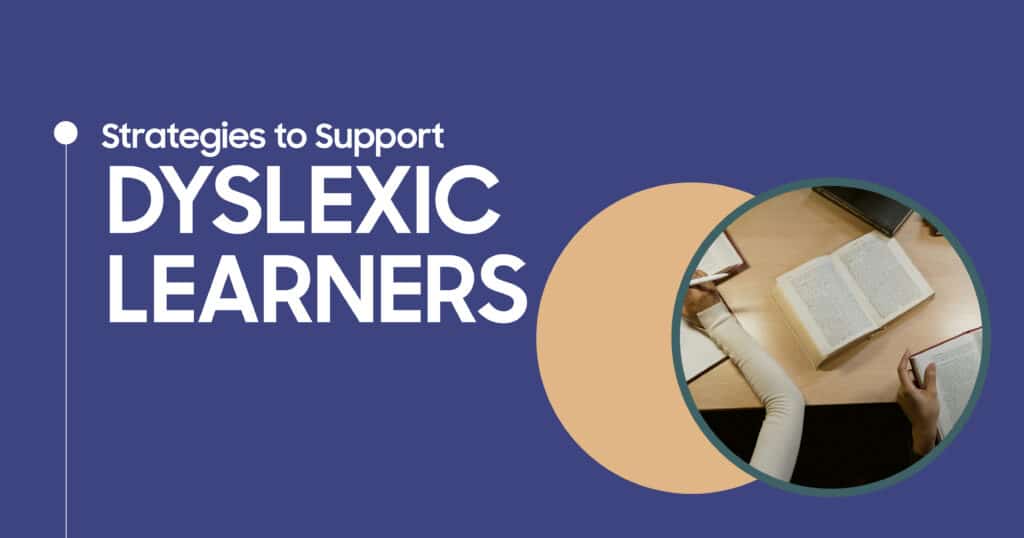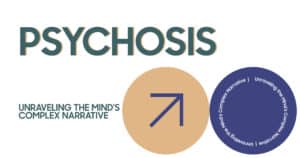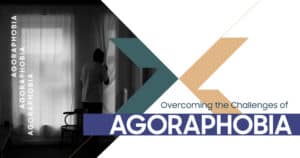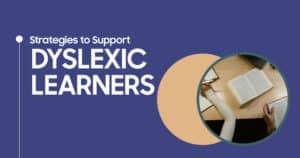One of the most prevalent learning disabilities is dyslexia, which is a poorly understood condition. Dyslexia concerns the processing of written and spoken language in an estimated 5 to 15 percent of the United States’ population, anticipating discrepancies in reading, writing, and comprehension. For children, such challenges may impact their school performance and self-esteem, and for adults, they may have problems at work or in everyday life.
Nevertheless, real-world solutions and interventions may significantly change things. People with dyslexia can also succeed in the classroom and in their home (or personal life) with the help of sound literacy interventions, educational support, and interactions with their family. This blog delves into the symptoms, causes, diagnostic tests, and support mechanisms of dyslexia.
An Overview of Dyslexia: Definition and Explanation
Dyslexia is a special learning disability mainly related to phonological processing – the ability to identify and manipulate sounds of language. It has nothing to do with intelligence – on the contrary, there are a lot of people with dyslexia who prove average or even above-average intelligence.
Key points about dyslexia:
- Influences an estimated one out of ten individuals all over the world.
- In the U.S., it is estimated that 80-90 percent of total learning disability that is diagnosed.
- Dyslexia is permanent, but it can be managed when one identifies the problem early and executes appropriate measures.

Treat Mental Health Tennessee
Common Symptoms and Signs of Dyslexia
Symptoms of dyslexia may also change with age. Still, children who show symptoms of phonological deficits at an early age are 4–5 times more likely to face persistent reading difficulties if interventions are not provided. Research evidence indicates that a child with early phonological deficits is 4-5 times susceptible to a continued reading disability when the interventions are not administered. In children, the first signs are as follows:
- The problem is identifying letters and matching them with sounds.
- Difficulties with acquiring rhymes or mealtime nursery songs.
- Later speech development than normal.
- Repeats of reversing letters (e.g., of confusing b and d), after 7.
- Difficulty in following multiple steps.
In teens and adults, the symptoms include:
- Difficult, slow reading, although of sufficient intelligence and education.
- Spelling disorders and written communication mistakes.
- Problem summarising written material or writing fluently.
- Avoid reading-intensive (e.g., long reports, academic quantifications) activities.
- Low reading fluency affects work or academic performance.
Exploring the Causes and Risk Factors for Dyslexia
Although there exists no single cause when it comes to dyslexia, studies suggest a synthesis of neurological factors, genetic factors, and environmental factors, which are probably the sole cause of dyslexia.
Genetic and Neurological Factors
Research highlights both genetic and neurological contributions to dyslexia.
- If one of the parents has dyslexia, the probability that the child will get it is 40-60 percent.
- Neuroimaging and imaging records indicate that dyslexics experience a decrease in the brain’s left hemisphere in the parts involved in processing language.
- Dyslexia is associated with the deprivation of phonological awareness, working memory, and fast naming skills.
Environmental Influences
The environmental factors are as follows:
- A lack of early book exposure and language-rich situations can aggravate reading difficulties.
- Literacy development can be retarded by chronic stress, absenteeism at school, or insufficient support in school.
- Low socioeconomic status has also been matched with the lack of resources in early reading support, yet dyslexia is taking place in all energies.
Diagnostic Procedures and Early Identification of Dyslexia
Early diagnosis is important in that interventions have their greatest effects when they are introduced in childhood. The National Center of Learning Disabilities states that they identify interventions through structured literacy and suggest that they should be implemented before the third grade, as 90% of students receiving interventions at an earlier stage are more likely to attain grade-level reading proficiency than later identified students. To facilitate timely identification, educational institutions and experts resort to a number of instruments and techniques, such as:
- Screening Devices – Phonological awareness and rapid naming tests are common in early grades of school.
- In-depth Assessments – A specialist or a psychologist assesses language processing comprehension, cognitive development, and reading.
- DSM-5 Diagnoses – Dyslexia has been classified under the specific learning disorder and is impaired in reading.
- Response to Intervention (RTI) – Before the school labels the challenge as a learning disability, the school can offer additional reading intervention to determine whether the child will respond to the intervention.
Treat Mental Health Tennessee
Effective Strategies and Interventions for Supporting Individuals With Dyslexia
To support dyslexics, evidence-based strategies are necessary to gather the unique requirements of these individuals as far as their learning is concerned. The studies all point out the significance of multi-sensory, structured intervention sets that address the phonological processing, reading comprehension, and general cognitive development. In addition to in-class instruction, the assistive technology and personal learning plans can help to develop literacy skills and academic confidence. Some of the more effective strategies are summarized in the table below:
| Strategy | Description | Examples/Benefits |
| Structured Literacy Programs | Explicit phonics instruction using multisensory methods | Orton-Gillingham, Wilson, Barton programs |
| Phonological Training | Focus on sound recognition and manipulation | Improves decoding, spelling, and word recognition |
| Assistive Technology | Digital tools to support reading and writing | Text-to-speech apps, audiobooks, and grammar aids |
| Reading Comprehension Strategies | Techniques to make texts more accessible | Chunking text, guided questioning, and graphic organizers |
| Individualized Education Plans (IEPs) | Customized goals and classroom accommodations | Extended test time, reduced reading load, one-on-one support |
The Role of Parents and Educators in Assisting Children with Dyslexia
In assisting children with dyslexia, parents and teachers must act together. It has been discovered that stable support in both home and school settings not only enhances the skills in reading, but also makes a child more confident and motivated. Having a combination of families and teachers will help develop an inclusive support system and assist the family in coping with academic and emotional issues. Among the best means of offering such support are:
- Parents can promote a reading environment at home by reading one such book every day, encouraging audiobooks, and rewarding effort rather than perfection.
- A teacher can embrace universal design of learning (UDL) innovations whereby alternative methods of delivering information and measuring knowledge are offered.
Resources and Support Networks for Individuals and Families Affected by Dyslexia
It is not possible to cope with dyslexia without the classroom interventions but families and individuals will find it profitable to refer to the resources that are specialized.
- International Dyslexia Association (IDA) – Provides research, parent manuals, and professional training.
- National Center of Learning Disabilities (NCLD) – It assists in advocacy and educational materials.
- Local Support Groups – Groups of families sharing techniques and support.
- Assistive Technology – Applications such as Learning Alley, Kurzweil, and NaturalReader assist in reading and comprehension.
Treat Mental Health Tennessee: Comprehensive Support for Dyslexia and Learning Challenges
Treat Mental Health Tennessee understands that dyslexia is not only a reading problem, but also an issue that affects cognitive skill, self-confidence and mental health. You cannot afford to wait in case your child is exhibiting signs of dyslexia. Now Visit Treat Mental Health Tennessee and discover how we can help bring out the potential and provide a bridge towards a personal lifelong learning mega-hit.

Treat Mental Health Tennessee
FAQs
What are the most effective literacy interventions for individuals with dyslexia to improve reading comprehension and cognitive development?
Some of the effective ones include structured literacy programs such as Orton-Gillingham, Wilson, and Barton. Such interventions involve phonics, multi-sensory learning, and systematic instructions, which enhance reading comprehension and long-term cognitive development.
How do phonological processing and language processing difficulties contribute to the reading challenges experienced by those with dyslexia?
The dyslexia problem is usually accompanied by inabilities to identify and utilize sounds (Phonological processing) as well as linguistic difficulties in language processing. All these problems make decoding, spelling, and comprehending words much difficult for affected learners.
What role do early diagnostic procedures play in identifying dyslexia as a learning disability and providing timely educational support?
Educators can guarantee that evidence of problem intervention is conducted through early screening and diagnostic evaluation prior to the establishment of reading problems. Supporting individuals at an earlier stage increases their chances of achieving grade-level reading skills.
Can parents and educators enhance reading skills in children with dyslexia through specific strategies aimed at reading difficulties?
Yes, intensive reading strategies such as daily read-alouds, multisensory work, and pairing reading tasks into small, manageable components work. Cooperation between home and school is a way to continue progress.
Are there support networks available for families to address the challenges associated with dyslexia and promote effective learning strategies?
Absolutely. There are organizations such as IDA and NCLD, but there are also local parent organizations and online communities with good resources and emotional support. Through these networks, families are empowered to influence the recognition of proper learning strategies and interventions.









